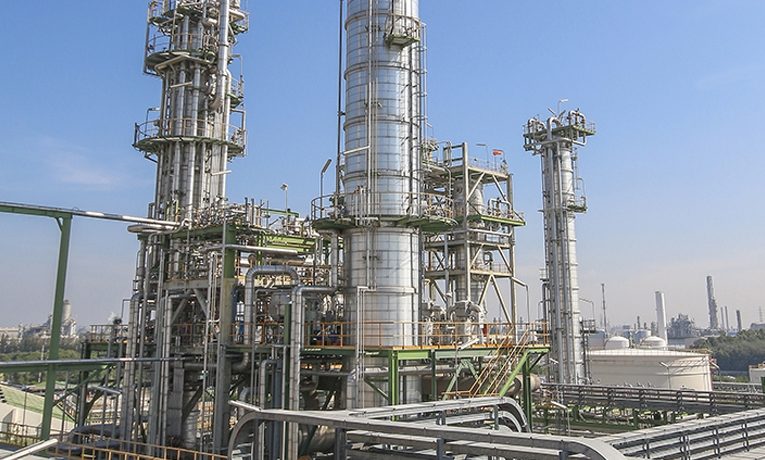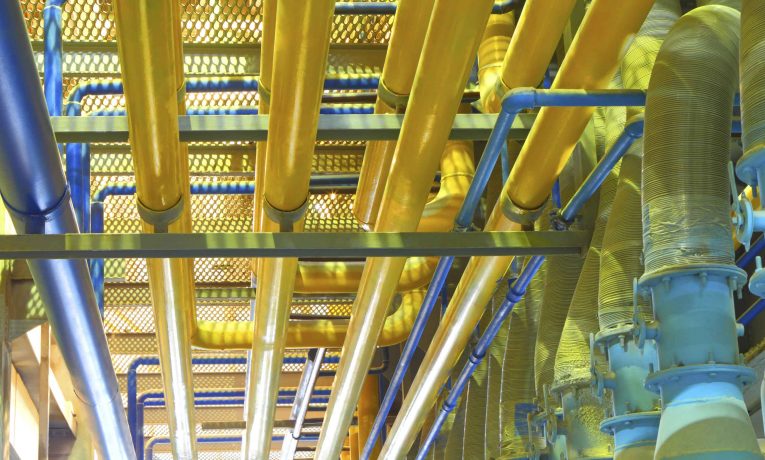Undertaking the construction of a new refinery or expanding an existing one is an extremely costly and incredibly demanding task. The process can seem overwhelming and daunting, even to the most experienced industry professionals. That’s why we’ve developed Q1 Day 1 services. Solomon understands the elements that are involved in this formidable job. Q1 Day 1 is like a toolbox stocked with tools designed to prepare new or recently renovated chemical plants and refineries for operation. The Q1 Day 1 toolbox contains services unique to Solomon that can ensure your facility is operating at a first-quartile (Q1) level (relative to other refineries) from day one.
Identifying a Need
Q1 Day 1 was created out of necessity. Companies that were either constructing or expanding refineries and chemical plants were approaching us with some unique challenges. These challenges included the following:
- Inadequate plant design
- Inefficient design of new organization structure
- Bloated staffing plans
- Lack of key performance indicators/competitive operating costs
- Excessively long start-up and initial operating periods.
What We Deliver
Out of this necessity came our invention: Q1 Day 1. We begin the Q1 Day 1 process by helping companies identify their performance targets for reaching Q1. Then we guide them in the creation and adjustment of a plan to reach the identified targets. We help ensure that a company’s work procedures are consistent with “best-in-class” best practices. And finally, we safeguard the company from any unexpected surprises so that the initial operations run smoothly.
How It Works
To help our clients reach their targets, we have simplified our Q1 Day 1 service into eight modules. It’s important to remember that these modules address all key Return on Investment (ROI) drivers.
1. Pro Forma Benchmark Analysis
The pro forma benchmark analysis is a comparison tool unique to Solomon that uses Comparative Performance Analysis™ studies to compare your facility to high-performing facilities around the world. The analysis employs two sorts of specific measuring tools: competitiveness and efficiency metrics. Competitiveness metrics include maintenance, personnel, and net cash margin. Efficiency metrics include Energy Intensity Index™ (EII®) and volumetric expansion. With each measurement taken, we’re able to develop one more point of comparison so that you have a greater understanding of how your facility is functioning as it gears up for operation. Unlike the normal benchmarking analysis that we do at Solomon, the pro forma is more difficult because it requires estimation on certain elements of the facility that may not yet be constructed.
2. Process Unit Key Performance Indicators (KPI)
We understand that KPIs are the backbone of your facility’s success. Without them, you would be left in the dark about your refinery or chemical plant’s success. You may think that you’re enjoying success, but what kind of success and compared to what? That’s why we set your KPI targets based on the measurements and information gathered during your pro forma benchmark analysis. Once you identify and establish your KPIs you can set appropriate goals, develop the necessary strategies to reach them, and continuously evaluate your progress.
3. Independent Technical Design Review
This is perhaps the module that makes our clients the most nervous because it tends to shine a light on some of their mistakes. It is for that reason that only one out of eight clients choose to partake in this review. The review examines your facility’s process design to optimize configuration and equipment specifications. We scrutinize the technology that is being used to ensure there isn’t a better alternative available. And, using our database, we compare initial vendor offers to peer group data to make sure your equipment is operating at maximum efficiency. Examples of the parameters we compare include hydrocracker pressure/conversion delayed coker configuration and yields, and H2 plant feed and configurations. Despite their initial reluctance, companies that chose to participate in our independent technical design review discovered that if they adhered to our suggestions, they would enjoy long-term financial savings.
4. Optimization Model Assessment
The goal of this module is to ensure that the linear programming (LP) model is the right fit for post-project operation. We review your facility’s model structure, unit operating costs, yield vectors, and product blending to ensure it will be running at its maximum efficiency.
5. Organizational Assessment
The organizational assessment is usually performed during the front-end loading phases when the design, project execution schedule, and preliminary estimate are developed. This is the ideal time to enhance the capital expenditure and operational expenditure targets. Based on staffing methodologies from top-performing plants, Solomon’s goal is to ensure that your refinery or chemical facility remains competitive. Our organizational assessment is not merely a blanket statement indicating that more staff should be hired. We take a very detailed look at your personnel organization and make sure the complexity of the project is reflected in the skills and expertise of your staff. The goal of our organizational assessment is to ensure the safety, reliability, and optimal performance of your facility.
6. Energy Balance
We developed the Energy Intensity Index™ (EII®) to measure the energy performance of a facility by examining its different units. The measurement is expressed in a percentage, and it is designed to encourage the facility to become more energy efficient. The more efficiently a facility operates, the fewer emissions it produces and the greater the profits it generates. In evaluating a facility’s energy balance, we ensure that fuel, gas, steam, and hydrogen balances are optimized. This analysis is designed to guarantee that your facility is operating efficiently and is therefore competitive.
7. Operability and Reliability Review
Our operability review involves many steps that vary depending on the facility. In a process unit review, we identify gaps or future potential weak spots that could affect the operability and reliability of your facility. We perform an integration review that highlights the misalignment of existing and new facilities as well as their existing support infrastructure. We undertake a “what if” analysis that examines whether the correct equipment is available to your facility for startup and shutdown planning. And finally, we undertake an initial operations review. This evaluation compares startup plans and timelines against industry norms. With your guidance, we consider how to streamline the commissioning process.
8. Q1 Day 1 Operations Strategy
With our final module, we compare the plans of your new or recently renovated facility to industry best practices. We thoroughly examine whether gaps exist. By looking at your work process mapping, we identify non-value-added activities in the planned work. And finally, we develop the Q1 Day 1 operation strategy, which combines your goals and objectives, KPIs, and gaps in the best practices. Out of this, we create a cohesive actionable tool that will help lead your new facility to optimal performance.
A Final Thought
The renovation or construction of a new refinery or chemical plant is a multi-million-, sometimes billion-dollar endeavor. That’s why Solomon’s unique Q1 Day 1 services are such a valuable tool in this process. Among its strengths is allowing you to detect potential problems in the process early on and take the necessary corrective actions. Q1 Day 1 helps you find ways to reduce your capital expenditures while ensuring your facility design will achieve competitive performance targets. And lastly, it provides you with a third-party review from an operational perspective, which is essential in the efficient operation of any facility. At Solomon, we understand the magnitude of constructing or renovating a new facility. That’s why we created Q1 Day 1 to ensure you reach your ROI objectives!

.jpg)
.jpg)
.jpg)
.jpg)

-updated.jpg)






.jpg)
-updated.jpg)
.jpg)
.jpg)
-updated.jpg)
-updated.jpg)
.jpg)
.jpg)


.jpg)
.jpg)
.jpg)
.jpg)
.jpg)
.jpg)
.jpg)
.jpg)
.jpg)
.jpg)
.jpg)
.jpg)